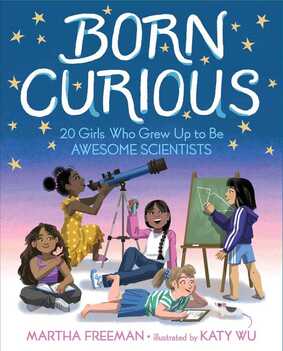By Denise Dávila on Behalf of the Biography Clearinghouse
Using Viewfinders Sister Corita Kent authored provocative multimodal compositions that were inspired by looking closely at ordinary objects and were imbued with intertextual meanings. As suggested in Make Meatballs Sing, much of her work began by focusing her attention on specific elements and blocking out others. She employed cardboard viewfinders with her students as tools for developing the skill of looking. These next activities build upon the use of viewfinders in the classroom. They are adapted from the Make Meatballs Sing Curriculum Guide.
Denise Dávila is an assistant professor at the University of Texas at Austin. She studies children’s literature and researches the home literacy practices of families with young children in under-resourced communities. BY MARY ANN CAPPIELLO on behalf of The Biography Clearinghouse As we approach the final quarter of 2020, fires rage along the West Coast. Many regions of the United States face drought conditions. Gulf communities are inundated by Hurricane Sally while a string of storms line up in the Atlantic, waiting their turn. The impact of climate change is evident. COVID-19 continues to wreak havoc on our lives, our health. We bear witness to the disproportionate impact of COVID-19 on minoritized groups, including Black and Latinx communities, Native Americans, and the elderly. Across America, Black Lives Matter protests carry on, demanding that our nation invest in the essential work necessary to achieve a more perfect union through racial justice. In 2020, we remember moments of historic change, commemorating the 30th anniversary of the Americans with Disabilities Act and the 100th anniversary of the 19th Amendment.  The intensity of this moment can’t be denied. It’s demanding. It’s exhausting. Whether you are a teacher, librarian, or university faculty member, you are likely teaching in multiple new formats and modalities, facing daily logistical challenges. Caregivers also face new hurdles in supporting young people’s learning. How do you meet the needs of students and the needs of this moment in history? How do you find hope in literature? Perhaps one way is to turn to the people of the past and the present who are working on the edges of scientific knowledge. Or, to turn to the people of the past and the present who have acted as champions of social justice. Their life stories offer young people models of agency and action, blueprints for change. To that end, The Biography Clearinghouse shares 20 biographies for 2020, a list of recent picturebook and collected biographies to connect with the challenges of the moment. This list is not comprehensive. It is simply a starting place. We hope these recently published biographies of diverse changemakers can become part of your curriculum or part of your read aloud calendar, in-person or over video conferencing software. Biographies About ScientistsBiographies About Champions for Change
If you have any picture book or chapter-length biographies or collected biographies for young people that you would like to recommend, please email us at [email protected]. We’re also interested in hearing more about how you’re using life stories in the classroom this year. Mary Ann Cappiello teaches courses in children’s literature and literacy methods at Lesley University, blogs about teaching with children’s literature at The Classroom Bookshelf, a School Library Journal blog, and is a former chair of NCTE’s Orbis Pictus Award for Outstanding Nonfiction K-8. |
Authors:
|
CLA
About CLA
|
Journal of Children's Literature
Write for JCL
|
ResourcesCLA-sponsored NCTE Position Statements
|
Members-Only Content
CLA Video Library
|
© COPYRIGHT 2018.
ALL RIGHTS RESERVED |






 RSS Feed
RSS Feed